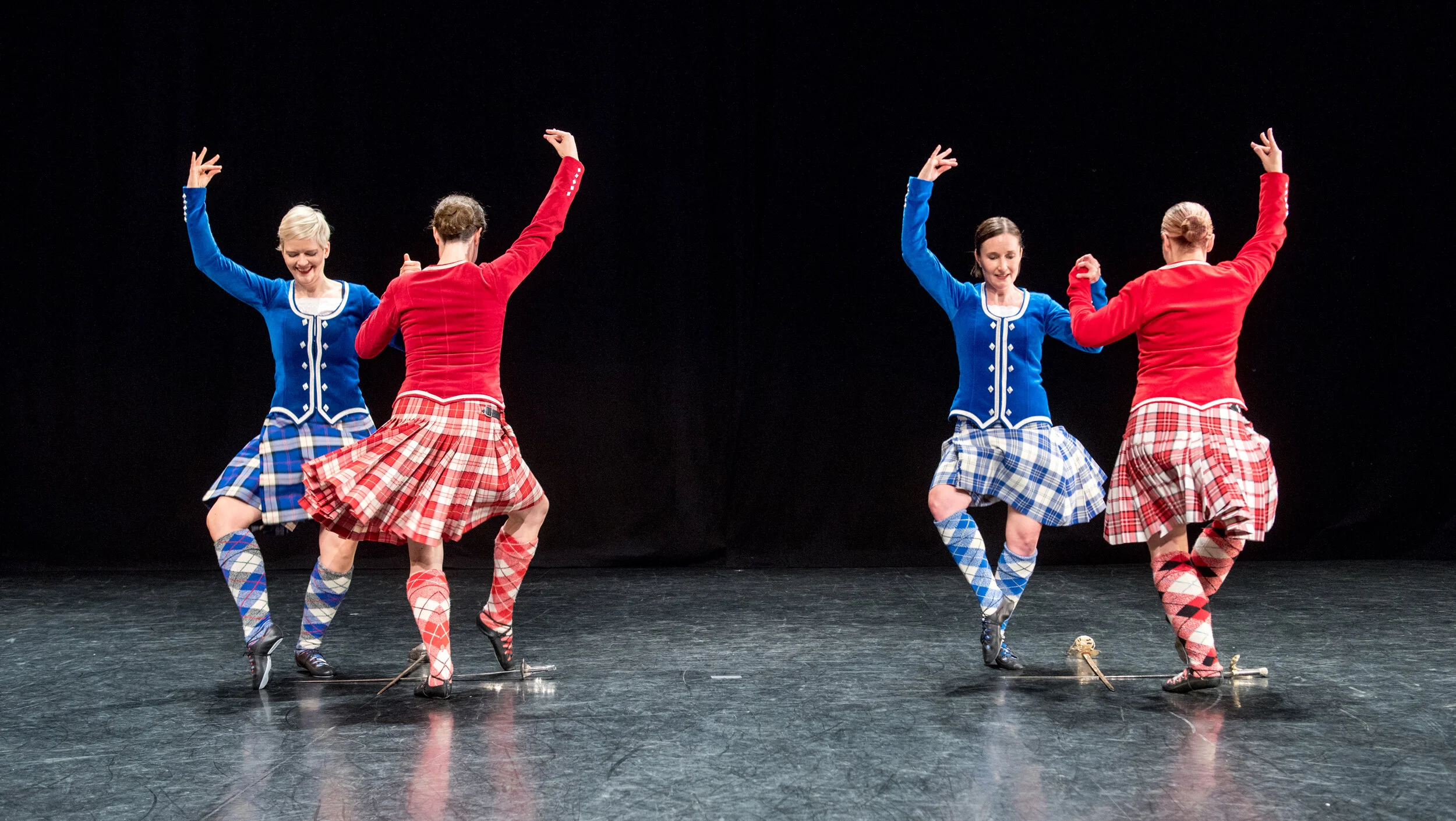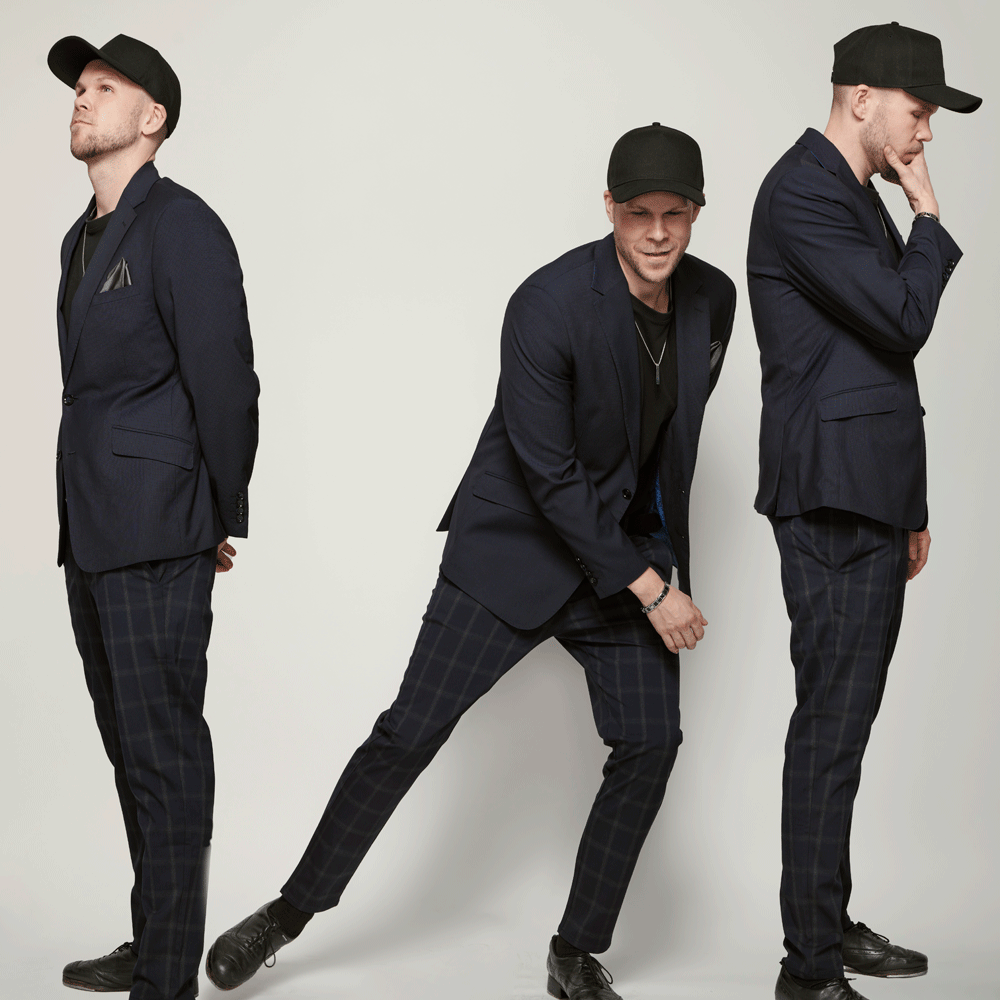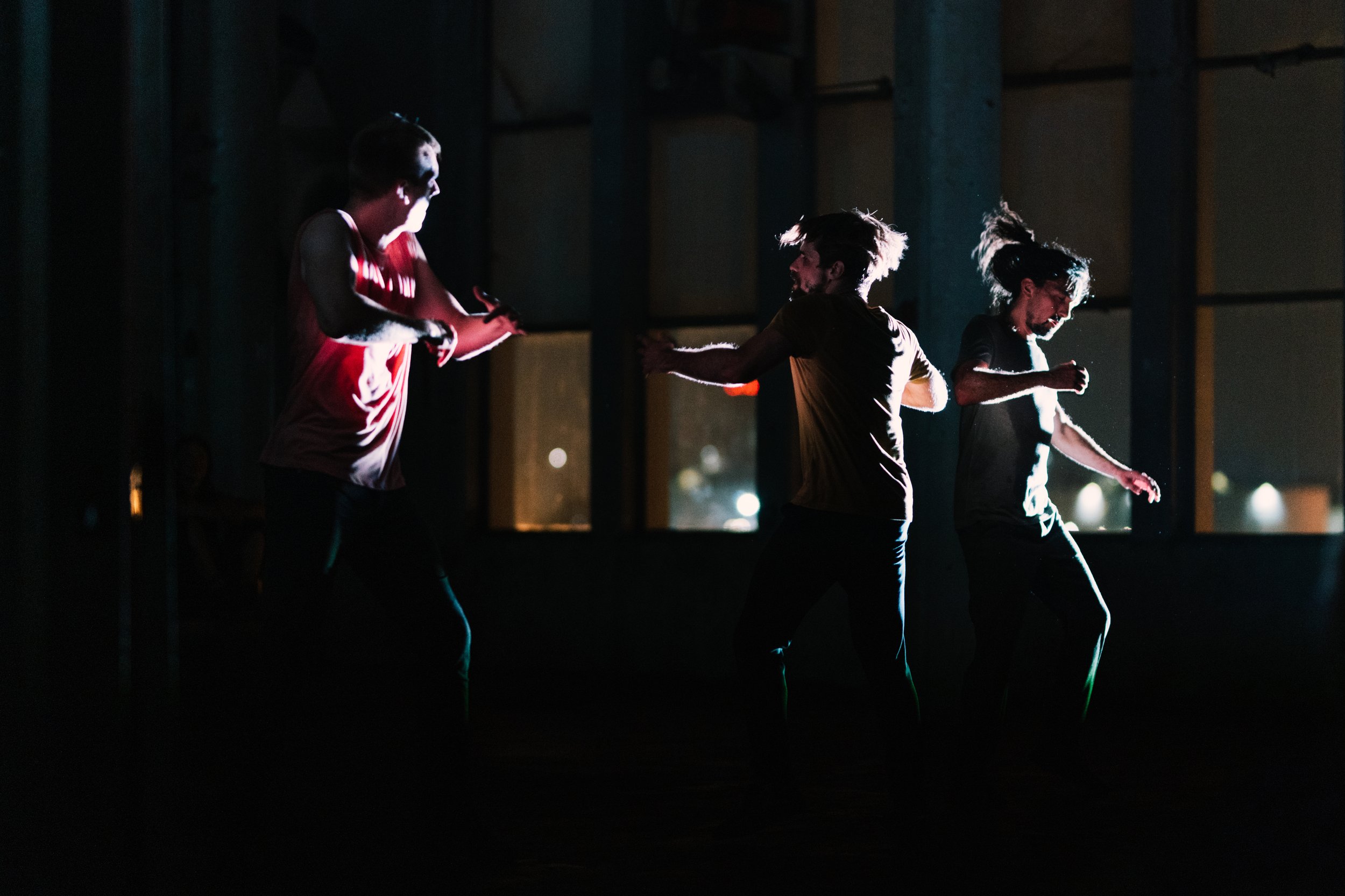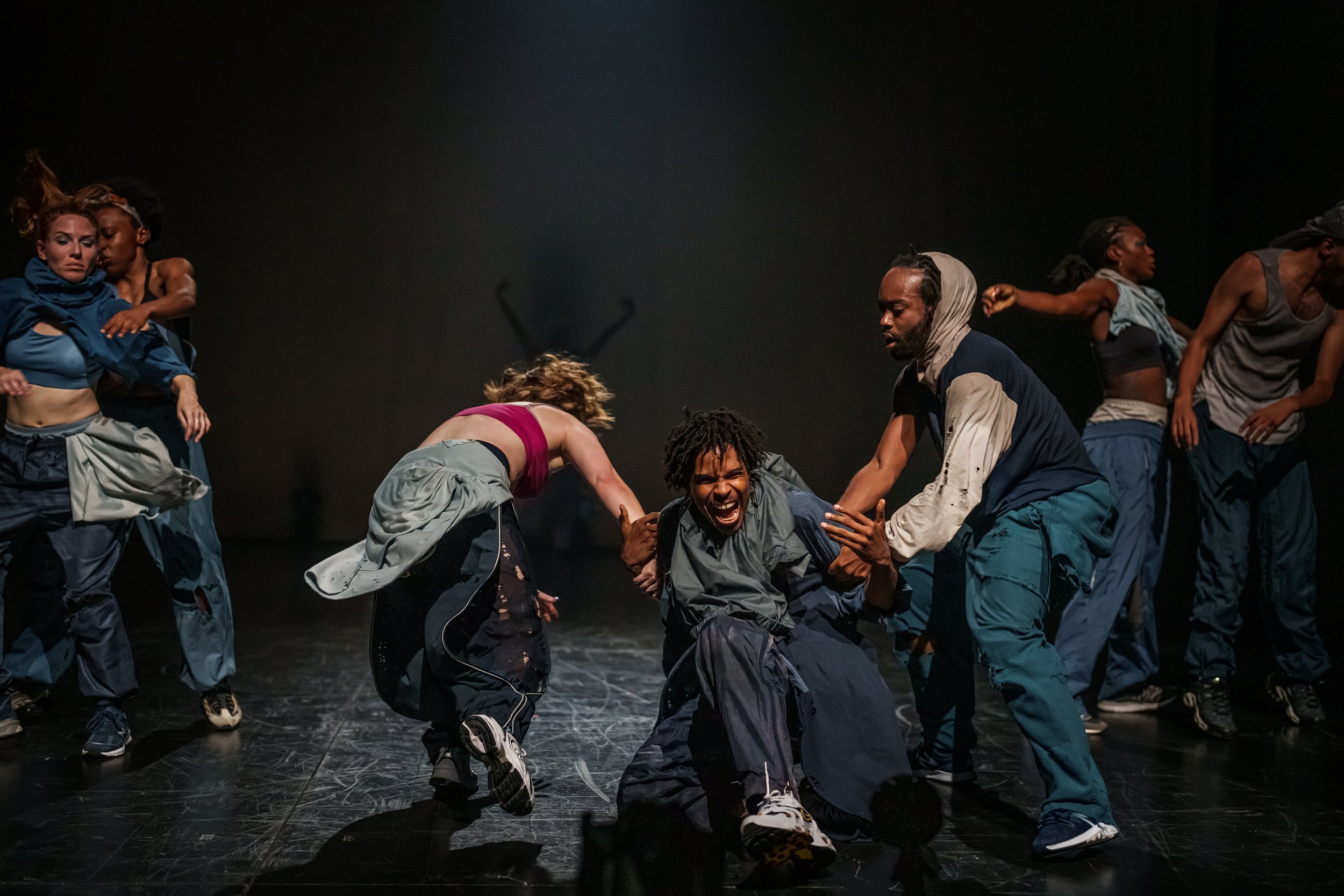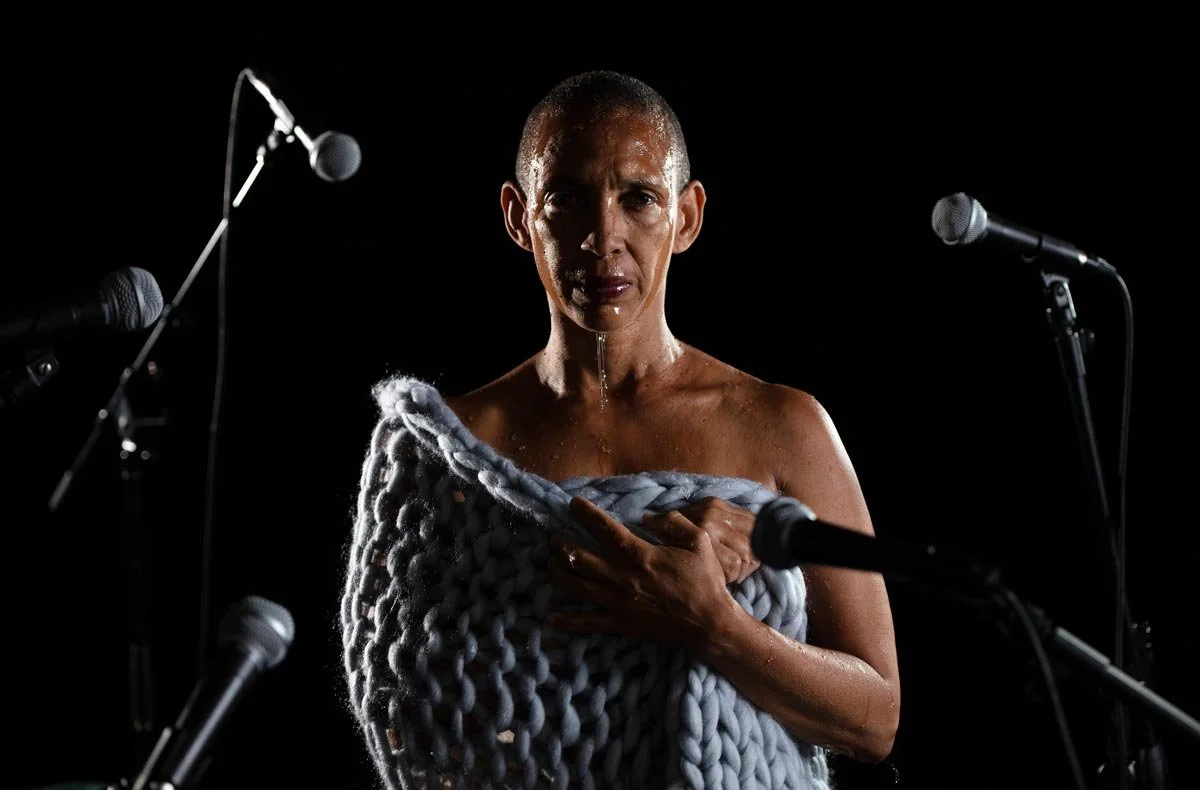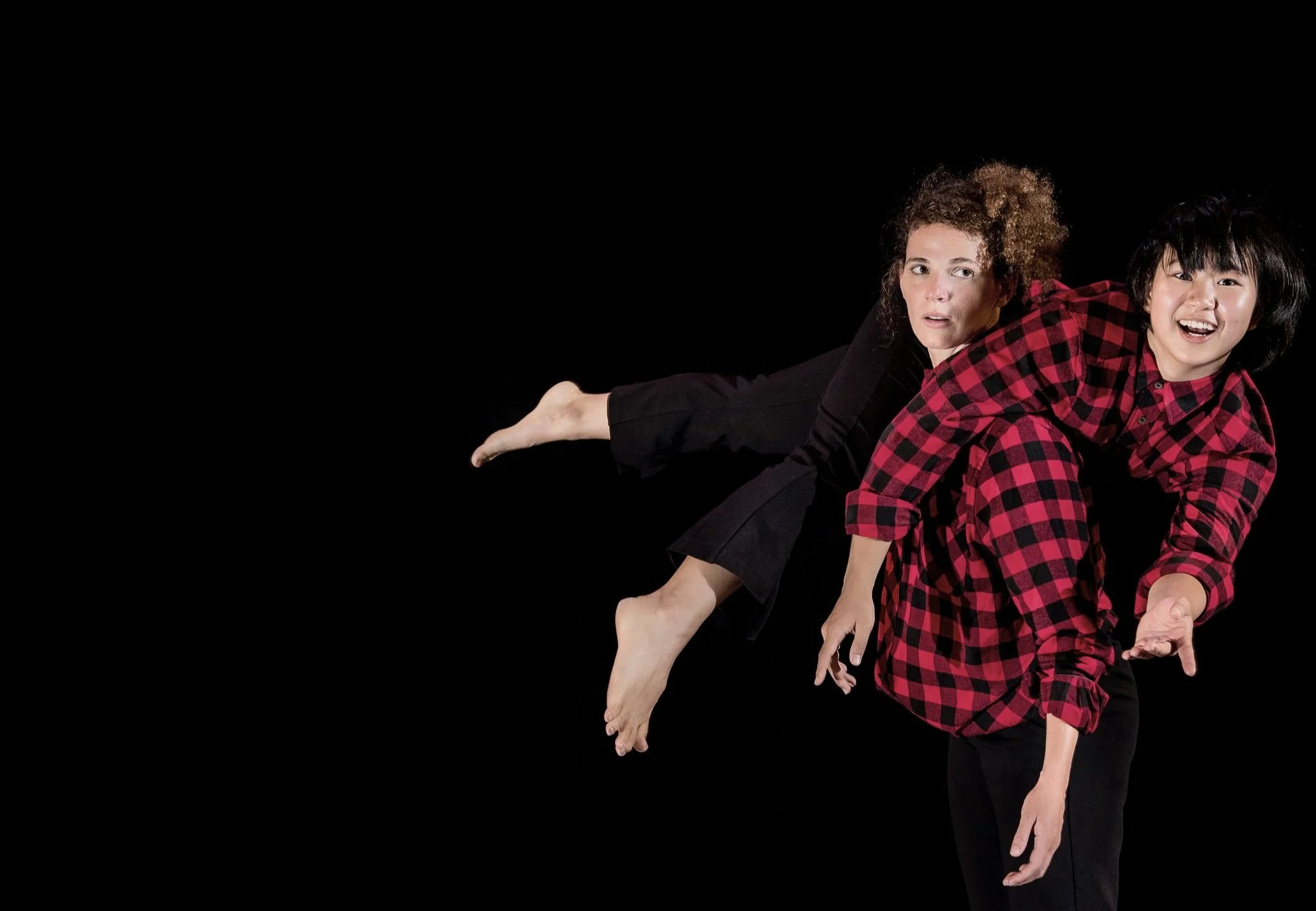Stir Q&A: Shot of Scotch Vancouver's Susan Nace dishes on Highland dance
On six-step flings, 192 hops, and the advisability of a wee dram before performing
Did you know Highland dancers need the strength and edurance of an athlete? Just watch Shot of Scotch Vancouver show their stuff (with Susan Nace at left). Photo by Chris Randle
PRECISE FOOTWORK AND swirling kilts will be on display as the Dance Centre’s Discover Dance! series features an online presentation by Shot of Scotch Vancouver, from September 24 at noon through to October 8 via the Dance Centre website.
The troupe, formed in 2013, will trace the form’s roots back centuries and show you how its physically pummelling traditions are evolving today. We got the lowdown from high-stepping artistic director Susan Nace before the show.
Tell us once and for all how Highland dance differs from Irish dance and those Riverdance folks.
Gladly! Though the music we dance to can sound similar, there are several major differences between the two dance forms. In Highland dance, our arms are often lifted up above the head, with fingers grouped lightly (to represent the antlers of a stag) whereas the Irish often dance with their arms down by their sides. Another major difference is that in Highland dance, with the exception of one dance, we dance in soft-soled shoes called ghillies instead of hard shoes. If you see a line of perfectly timed percussive Celtic dancers in short dresses with curly hair, you are probably watching Irish dance. When in doubt if a dancer is a Scottish Highland dancer or not, look for kilts in brightly coloured tartans, hair slicked back in a high bun, some swords laying around, and a bagpiper playing loudly beside them.
Is it true that Highland dance requires the endurance and strength of an athlete?
One-hundred-percent yes this is true! It is said that in a traditional six-step Highland Fling, a dancer will hop on one leg at a time vertically 192 times while performing complicated and intricate footwork, using muscles from head to toe. Highland dancing is akin to sprinting, so it’s a little like running a mile with your arms above your head, on your toes, in soft shoes, wearing several pounds of wool clothing…and don’t forget to smile!
You were a chemical engineer. Is there anything from that career that you bring to your dance?
Absolutely. Engineers at their core are problem solvers. My experiences with project management, budgeting, writing proposals, and dealing with an array of different personalities in different industries has helped me manage the many daily challenges that arise as a dance director and choreographer. I use a lot of the same detail-oriented skills now that I did in my engineering office job, but now I’m free to sing and dance while I do the work!
How is Highland dance evolving, and how does Shot of Scotch Vancouver take it in new directions?
I think Highland dance is evolving to expand beyond its competitive roots. Though the core of Highland dance focus remains in local, national, and world championships, there are more and more opportunities arising globally for dancers to perform, to create choreography, and to connect with their communities.
Shot of Scotch was formed to give adult dancers a way to continue to dance at a high level beyond competition. Our company strives to create imaginative and innovative Highland dance that engages and inspires diverse audiences on an emotional level. We honour the roots and traditions, while also pushing the boundaries of artistic expression of this virtuosic dance form.
Does a shot of scotch help or hinder Highland dance?
The short answer is that one shot of scotch might enhance a performance, but any more should be saved for after dancing! Slainte!


